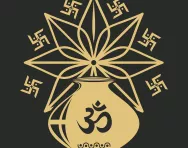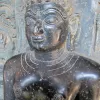Important update from TheSchoolRun
For the past 13 years, TheSchoolRun has been run by a small team of mums working from home, dedicated to providing quality educational resources to primary school parents. Unfortunately, rising supplier costs and falling revenue have made it impossible for us to continue operating, and we’ve had to make the difficult decision to close. The good news: We’ve arranged for another educational provider to take over many of our resources. These will be hosted on a new portal, where the content will be updated and expanded to support your child’s learning.
What this means for subscribers:
- Your subscription is still active, and for now, you can keep using the website as normal — just log in with your usual details to access all our articles and resources*.
- In a few months, all resources will move to the new portal. You’ll continue to have access there until your subscription ends. We’ll send you full details nearer the time.
- As a thank you for your support, we’ll also be sending you 16 primary school eBooks (worth £108.84) to download and keep.
A few changes to be aware of:
- The Learning Journey weekly email has ended, but your child’s plan will still be updated on your dashboard each Monday. Just log in to see the recommended worksheets.
- The 11+ weekly emails have now ended. We sent you all the remaining emails in the series at the end of March — please check your inbox (and spam folder) if you haven’t seen them. You can also follow the full programme here: 11+ Learning Journey.
If you have any questions, please contact us at [email protected]. Thank you for being part of our journey it’s been a privilege to support your family’s learning.
*If you need to reset your password, it will still work as usual. Please check your spam folder if the reset email doesn’t appear in your inbox.
Jainism

Jainism is an ancient religion. Jains trace their beliefs and history through a succession of twenty-four leaders (tirthankaras). Today there are about 4 to 5 million followers of the religion, mostly living in India, and they are known as Jains.
Jainism is based on the idea that people should never be violent in what they think, do or say.
Unlike some religions, Jains do not believe in a god or creator.
Top 10 facts
1. Jainism, also known as Jain dharma, is a very old Indian religion.
2. Jains believe that in every epoch 24 tirthankaras are born in intervals, and live to spread the teachings of the Jaina faith.
3. At present, Jains are following the religious order set up by Mahavira about 2500 years ago. He was the twenty–fourth tirthankara of this present epoch.
4. Jainism's most important idea is that people should never be violent in what they think, do or say.
5. Jainism is not a religion that believes there was a god who created everything. For Jains the universe is without beginning or end.
6. Jains believe all living things are trapped in a cycle of birth and rebirth and aim to achieve moksha, release from this cycle.
7. People who achieve moksha during their life are called jinas (those who overcome), and this word gives the religion its name. People who follow Jainism are called Jains.
8. Jains do not worship any gods or saints.
9. Mahavira is reported to have said: "Non-violence is the highest religion."
10. In August or September, the Jains hold their most important festival, called Paryushana.


Start your child on a learning programme today!
- Weekly English, maths & science worksheets direct to your inbox
- Follows the National Curriculum
- Keeps your child's learning on track
Did you know?
Jains do not believe there was a God who created everything and don't worship gods or saints.
In Jainism, all life has a soul, whether you're a plant or a person.
As a result of their beliefs, Jains are vegetarian and many choose to become vegan.
Jains try very hard to avoid harming any living things, even very small ones, and often sweep insects away from their path so they won't hurt them.
Most Jains do not include mushrooms, honey or root vegetables in their diet. Jains prefer to eat foods like apples because eating an apple doesn't kill the tree.
Jains do not drink alcohol or take drugs that might change their state of mind.
Fasting – where people choose to go without food, drink or both for a period of time – is common in Jainism.
People who follow Jain teachings also have as few possessions as possible. Some don't even own clothes and are known as digambaras ("sky-clad").
The swastika, which became a symbol of Nazi Germany, is in fact an important symbol in Jainism although its Jain meaning is completely different. The swastika has four sections and each represents a state of existence: human life, plant / animal life, heavenly beings and hellish (bad) beings.
People who follow the Jain religion believe in reincarnation (rebirth) and karma.
There are thousands of Jain temples in India.
Look through the gallery and see if you can spot the following:
- A Jain temple
- Ranakpur, Jain temple decorations
- Palitana in Gujarat, India is a sacred city and major pilgrimage centre for Jains
- A Mahavira idol in Bombay
Gallery
About
Jainism is a very old religion that began in India.
From the beginning, Jainism was based on the idea that people should never be violent in what they think, do or say. There are about 4 to 5 million followers of Jainism and most of them live in India. People who follow the region are known as Jains.
An important figure in the history of Jainism was Mahavira, who lived in India in the sixth century BC, during the time of Buddha. Mahavira was also thought to be a prince who gave up everything he had to find out more about spirtuality. He fasted and meditated for twelve years and gradually he freed himself from the concerns of the world. By doing this he gained what is called 'enlightenment' and began preaching and teaching. Mahavira influenced many people with his findings and helped make the religion what it is today.
Care and compassion for all life – whether human, animal or plant – is of key importance in Jainism.
Jains believe that every living thing, no matter how small, has a soul and should not be harmed. Some Jain monks even sweep the ground in front of them as they walk just to make sure they don't step on an insect, or wear a mask to stop themselves from swallowing one!
Jains celebrate their most important festival in August or September. It is known as Paryushana or Daslakshana and lasts 8-10 days. The festival is an important time for Jains during which they often fast and meditate.
Jains believe in rebirth of the soul. That means they believe that when a living being dies the soul is born in another body. The main goal of Jainism is to reach something called moksha (ending the cycle of birth-death-rebirth). Jains achieve moksha when they reach enlightenment or what Jains call 'god's knowledge'. According to Jainism the things people do during their lives attract karmas, which can be good or bad. The karmas are attached to a person's soul and affect what happens to them in later rebirths. When the soul achieves moksha it is liberated from the karmas and rises to the top of the universe and a state of happiness known as nirvana. The people who have reached moksha are called tirthankaras.
Jain temples are beautiful buildings and inside you will always find 24 statues of the tirthankaras. Although Jains do not believe in one God, they use the tirthankaras as guides for their daily lives. Worshippers stand in front of each statute and bow and pray. Then pour an offering of milk, yogurt, butter, sugar and flowers over the statues.
Related Videos
Just for fun...
Read The Elephant and the Rabbit, a Jain story about non-violence for children
Try some quizzes, crosswords and puzzles about Jainism
Download Jain faith colouring pages
Jain games, animations and English songs are available on the Kids' section of Jain World
Best kids' books about Jainism
Find out more
Read the BBC's guide to the Jain religion
Read the story of Mahavira
Find out about Jain religious pilgrimages
The Encyclopedia Britannica's entry on Jainism
See for yourself
The Victoria & Albert Museum in London has one of the largest collections of Jain art in the UK, including sculptures and paintings. Visit in person or see some of the art online
See Jain sculpture on the website of the Metropolitan Museum of Art in New York City
There is a Jain Museum in India
See pictures of Jain temples in India
Learn more about the Jain faith in the UK at the Jain Centre in Leicester (the first consecrated Jain temple in the Western world) or at the Oshwal Centre, a Jain temple in Potters Bar. There is also a Jain temple in Harrow in London
See a picture slideshow of a spectacular Jain festival










